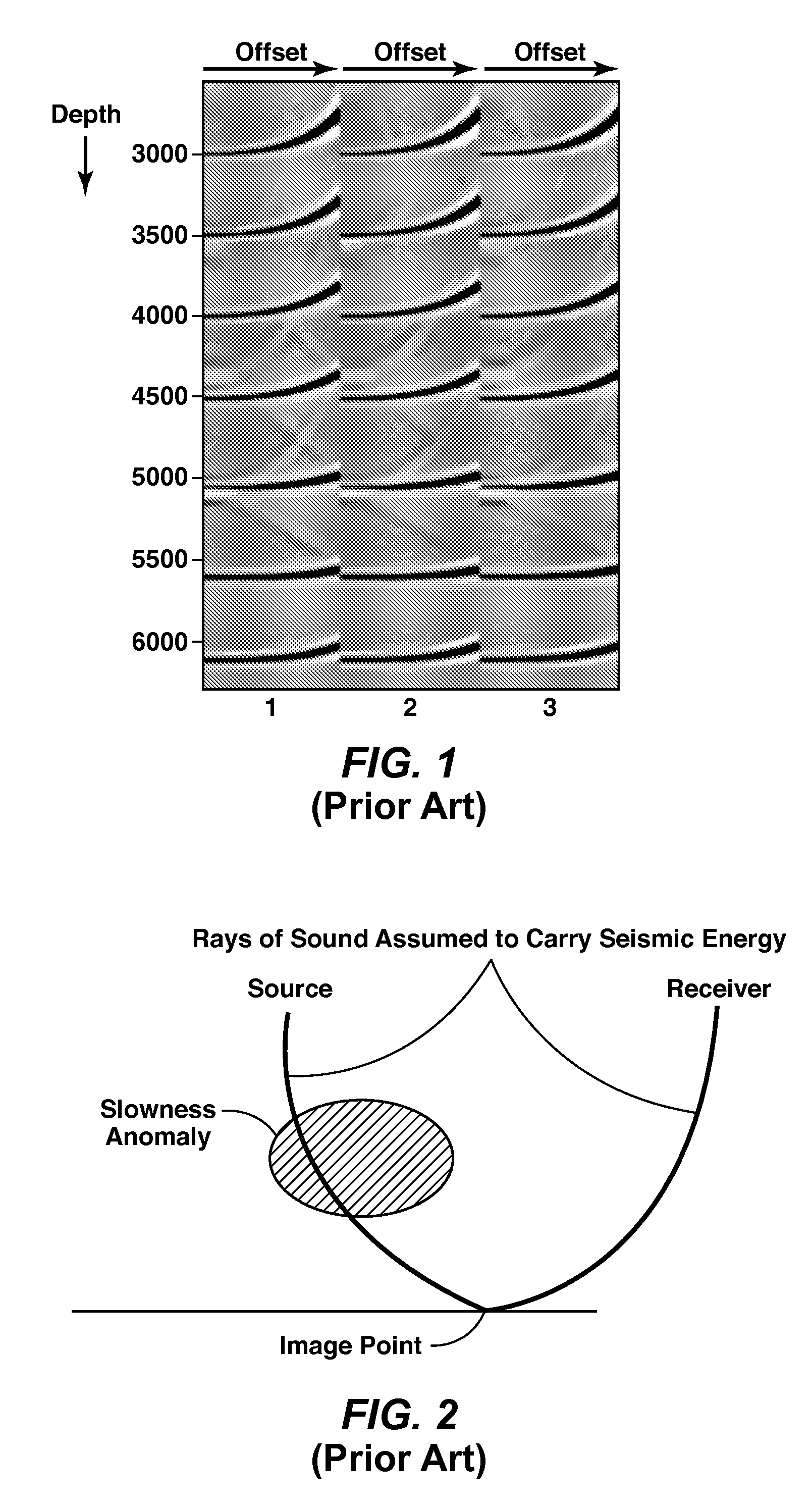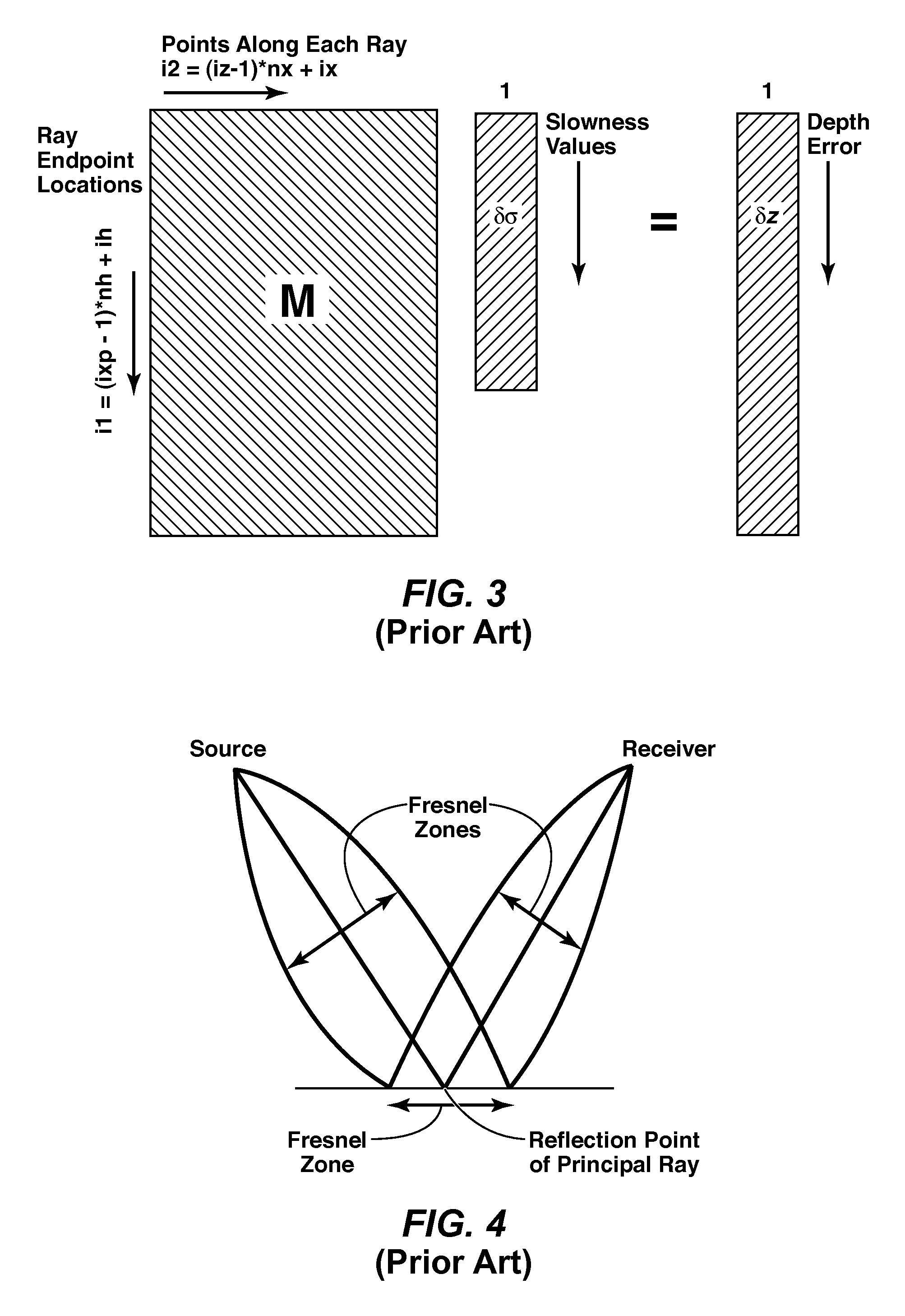Fresnel Zone Fat Ray Tomography
a technology of fat ray tomography and fresnel zone, which is applied in the field of seismic data processing, can solve the problems of not having a fat ray technique specially designed, unstable velocity inversion, and uncertainty about the reliability of the final velocity model
- Summary
- Abstract
- Description
- Claims
- Application Information
AI Technical Summary
Problems solved by technology
Method used
Image
Examples
example
[0052]FIGS. 12A-D show a comparison of the performance of the present method on a test model, with the axes representing depth and lateral distance. FIG. 12A shows the actual velocity test model; FIG. 12B shows the starting velocity model; FIG. 12C shows the result of using conventional thin ray tomography which is approximately the same as using a narrow band version of the present method, not summing over frequencies. FIG. 12D shows the result with the present method. There is clear improvement in resolution of the target.
PUM
 Login to View More
Login to View More Abstract
Description
Claims
Application Information
 Login to View More
Login to View More - R&D
- Intellectual Property
- Life Sciences
- Materials
- Tech Scout
- Unparalleled Data Quality
- Higher Quality Content
- 60% Fewer Hallucinations
Browse by: Latest US Patents, China's latest patents, Technical Efficacy Thesaurus, Application Domain, Technology Topic, Popular Technical Reports.
© 2025 PatSnap. All rights reserved.Legal|Privacy policy|Modern Slavery Act Transparency Statement|Sitemap|About US| Contact US: help@patsnap.com



